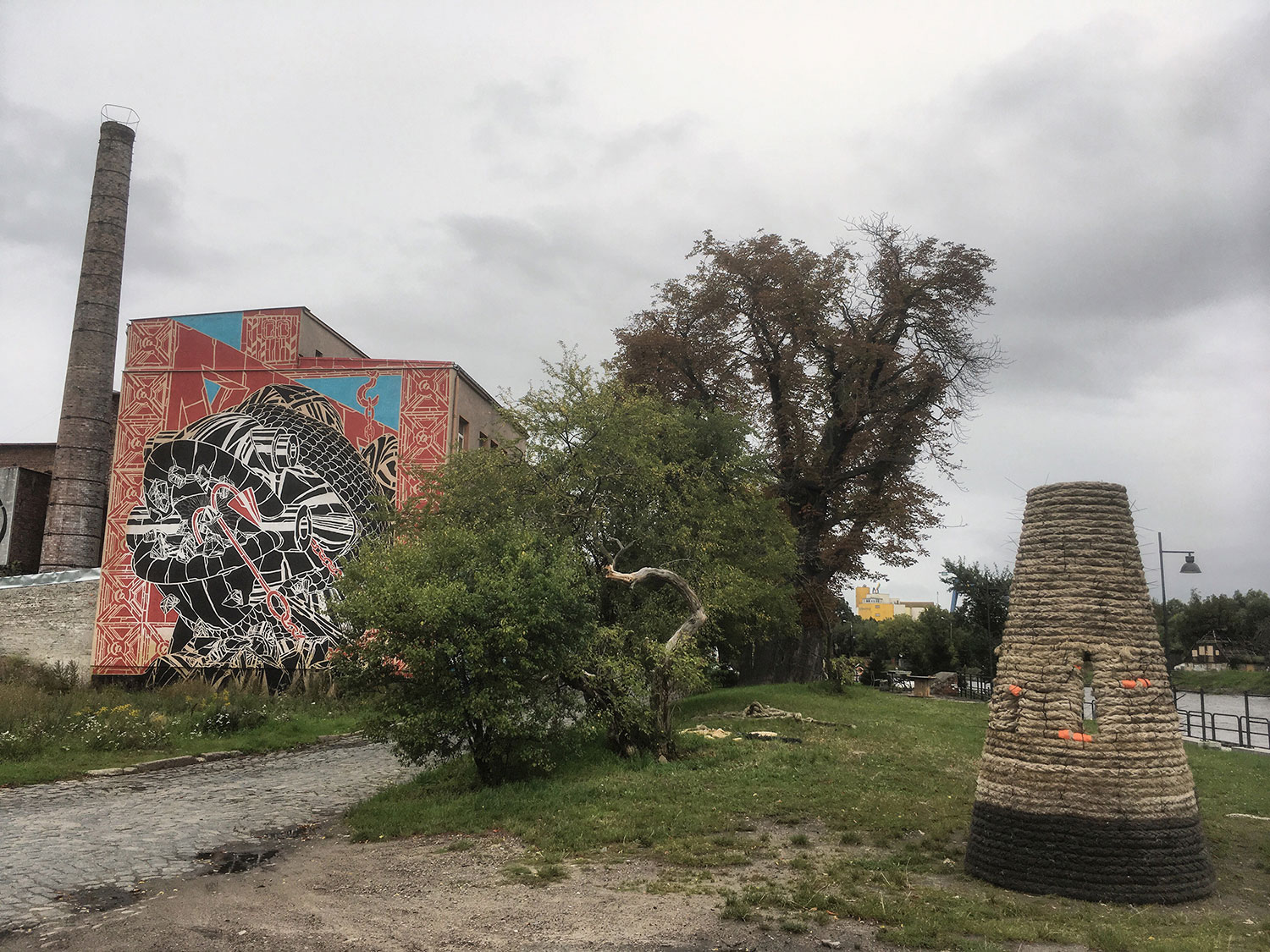AWARD
Baxendale Studio with Ben Parry
Riverside Solidarity
Working in collaboration with Ben Barry, Baxendale has delivered two temporary interventions that are intended as a tool to analyse, register and document the contested post-industrial condition of the Govan and Gdansk shipyards. The first installation was built on the derelict Govan Graving Docks using 9cm thick rope that we found on the site. The installation was used as a research tool to document how this contested site is occupied informally by a range of actors. Through the course of the three days we spent building the installation we engaged with local young people who use the site as an informal playground, photographers and a refugee integration group. All of these groups assisted in the building of the structure in a variety of ways. The finished piece provided two unique places to sit and engage with the landscape; one seat facing symbols of Govan's past and one seat facing symbols of Govan's future. After completion of the artefact we continued to return to engage with the young people who had assisted and then adopted the structure. They revealed that having exhausted their interest in the structure that they would set fire to it. This seemed to be an appropriate way to terminate this stage of the project and so we agreed that the decision was theirs to make.
The opportunity to make a parallel project in Gdansk allowed us to test this methodology of architecture as a tool for registering a place and researching its condition. Over the course of four days in Gdansk, we recreated the form and methodology of the intervention delivered in Govan; identifying old shipping rope in the possession of an artists collective that has occupied a former bakery within the shipyards. We then worked collaboratively to create a place of shelter and enclosure that referenced the three current modes of re-occupation of post-industrial space in Gdansk; artists occupation of vacant property, the state sponsored construction of large cultural institutions and the development of new private housing for profit.
This work utilises very simple methodologies of construction, timber frames constructed in-situ and then then wrapped with found rope attached secured with cable ties.
Whilst this project has two physical outcomes our submission is really one of process rather than object and an attempt to present an alternative utility for architecture and making within the public realm









